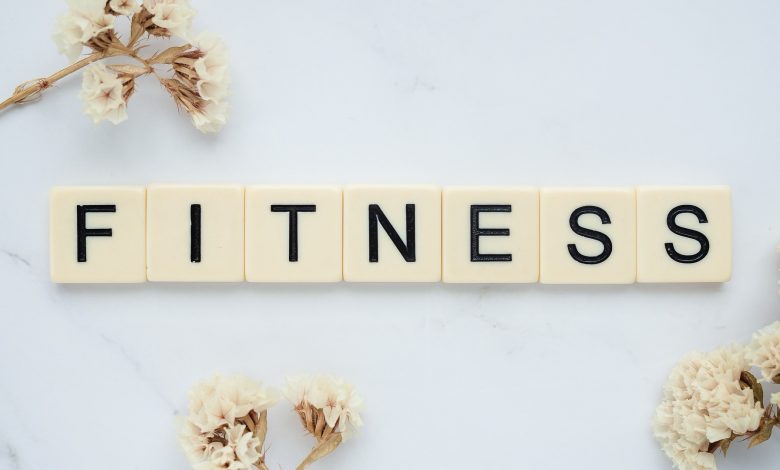The Ultimate Guide to Fitness: How to Build a Healthy and Active Lifestyle


Table of Contents
1. Introduction
• Components of Fitness
• Physical Health Benefits
• Mental Health Benefits
4. How to Start Your Fitness Journey
• Setting Goals
• Choosing the Right Exercise
• Building a Routine
5. Types of Fitness Activities
• Cardiovascular Exercises
• Strength Training
• Flexibility and Mobility Workouts
• Recreational and Sports Activities
7. Common Fitness Myths Debunked
8. Conclusion
Introduction
Fitness is more than just looking good—it’s about building a healthier, stronger, and more active version of yourself. In today’s fast-paced world, maintaining fitness has become essential for combating stress, improving health, and enhancing overall well-being. This guide explores the foundations of fitness, its benefits, and how you can start and maintain a fitness journey that works for you.
What is Fitness?
Fitness refers to the ability to perform daily activities with vigor and without undue fatigue. It encompasses a variety of physical capabilities, including strength, endurance, flexibility, and balance.
Components of Fitness:
1. Cardiorespiratory Endurance: The ability of the heart and lungs to supply oxygen to the body during sustained physical activity.
2. Muscular Strength: The ability of muscles to exert force.
3. Muscular Endurance: The ability of muscles to perform repeated contractions over time.
4. Flexibility: The range of motion available in joints and muscles.
5. Body Composition: The proportion of fat to lean mass in the body.
Benefits of Staying Fit
Physical Health Benefits:
Read also:How to deal with anxiety and stress.
• Improves cardiovascular health by reducing the risk of heart disease and high blood pressure.
• Enhances muscle and bone strength, reducing the risk of osteoporosis and injuries.
• Boosts immune function, helping the body fight illnesses.
• Aids in weight management and reduces the risk of obesity-related diseases like diabetes.
Mental Health Benefits:
• Releases endorphins, which improve mood and reduce stress.
• Enhances sleep quality by regulating the body’s circadian rhythm.
• Improves focus, memory, and overall cognitive function.
• Builds self-confidence and reduces symptoms of anxiety and depression.
How to Start Your Fitness Journey
1. Setting Goals
Define clear and achievable fitness goals. Whether it’s losing weight, building muscle, or running a marathon, having a target keeps you motivated.
2. Choosing the Right Exercise
Select activities you enjoy, such as dancing, swimming, or strength training. This ensures consistency and makes your fitness routine fun.
3. Building a Routine
Start slow and gradually increase intensity. Allocate specific times for exercise and stick to them, making fitness a part of your daily life.
Types of Fitness Activities
1. Cardiovascular Exercises
Examples: Running, cycling, swimming, and brisk walking.
• Improves heart health and burns calories.
2. Strength Training
Examples: Weightlifting, resistance band exercises, and bodyweight workouts.
• Builds muscle, increases metabolism, and strengthens bones.
3. Flexibility and Mobility Workouts
Examples: Yoga, Pilates, and stretching routines.
• Enhances range of motion, reduces stiffness, and prevents injuries.
4. Recreational and Sports Activities
Examples: Tennis, basketball, or hiking.
• Combines fitness with social interaction and enjoyment.
Tips for Staying Motivated
1. Set Realistic Goals: Unrealistic expectations can lead to burnout. Start small and celebrate every milestone.
2. Track Your Progress: Use a fitness app or journal to monitor achievements and identify areas for improvement.
3. Find a Workout Buddy: Exercising with a friend keeps you accountable and makes workouts enjoyable.
4. Reward Yourself: Celebrate progress with healthy rewards, such as new workout gear or a relaxing spa day.
5. Stay Flexible: If a routine gets boring, switch things up to keep it exciting and fresh.
Common Fitness Myths Debunked
1. “You need to exercise for hours to see results.”
Truth: Even 30 minutes of focused activity can make a big difference.
2. “Lifting weights makes women bulky.”
Truth: Strength training tones the body and boosts metabolism without causing excessive bulk.
3. “No pain, no gain.”
Truth: While some discomfort is normal, pain is a sign of potential injury and should be avoided.
4. “You can spot-reduce fat.”
Truth: Fat loss occurs throughout the body, not just in specific areas.
Conclusion
Fitness is a lifelong commitment to improving your health and quality of life. By understanding its benefits, setting realistic goals, and staying motivated, anyone can create a sustainable fitness routine. Remember, fitness is a journey, not a destination—what matters most is consistency and finding joy in the process. Start today, and take the first step toward a healthier, more active you. Real also The Power of Sleep: Why It’s Essential for Your Health and How to Improve It



